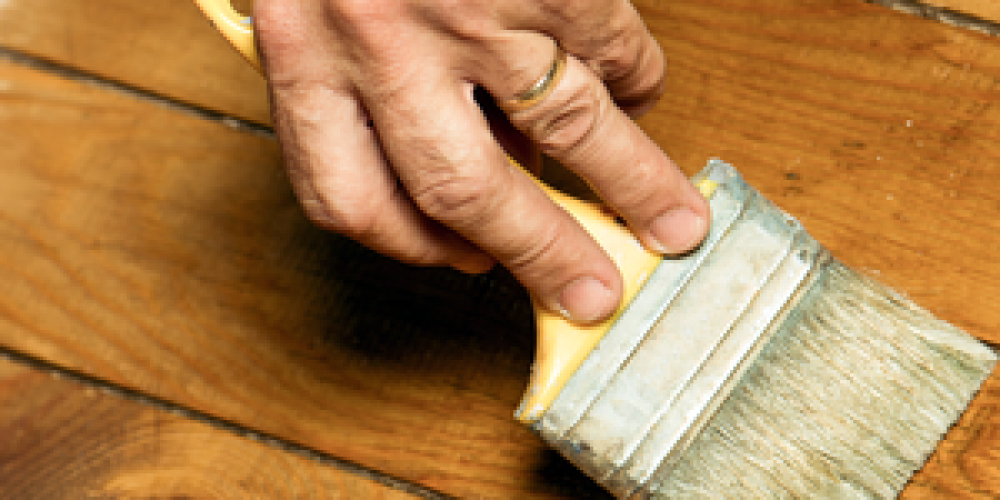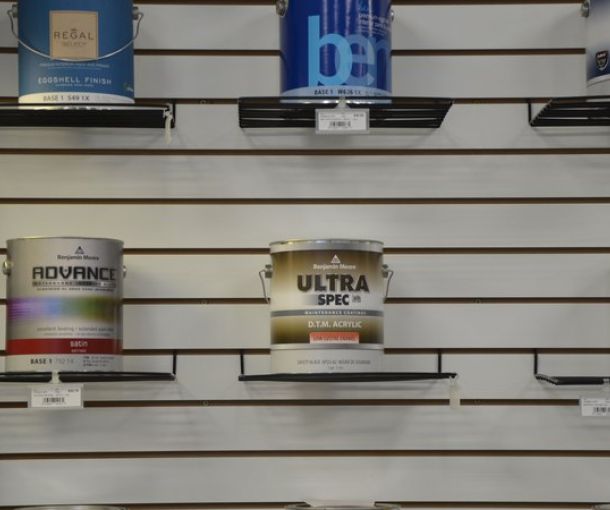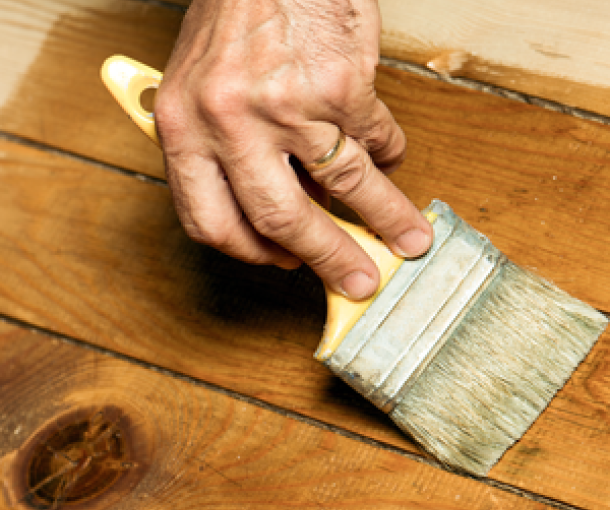Tips On Staining Wood And Concrete

The amount of stains in the paint store can be overwhelming. But it doesn’t have to be this way! Below we give you some quick pointers to remember when choosing a stain for your wood or concrete, so that you can pick the right stain for the job every time.
Tips On Staining Wood
Achieving the perfect stain requires the right stain and paint supplies, so proper brushes, masks, gloves, tape, dropcloth, and ventilation are obvious prerequisites for all of the tips below.
Always Test First
Remember to always test a new stain on a small, discrete part of wood before applying to the whole thing, especially if you’re staining furniture. There’s nothing worse than putting on a fresh coat of stain on an irreplaceable piece, only to discover it reacts poorly with the wood!

Add Wood Conditioner
Before staining wood, remember to prep the wood so that it properly receives the stain by treating the wood with a thin coat of wood conditioner beforehand. Sanding isn’t required, but you should let the wood conditioner set for at least 15 minutes before applying your stain.
Oil Vs Water-Based Paints
Remember that beyond the differences in stain and paint brands, there is also a fundamental difference in the ingredients used.
Oil-based stains are the most common wood stains. They take longer to dry, but it's also less likely they’ll need sanding down once they dry. Oil based stains also oftentimes emit heavy fumes, so remember to properly prepare with either adequate ventilation or the appropriate mask.
Water-based stains offer a bigger variety of stain colors and dry faster than oil-based wood stains, so it’s important to factor this into your consideration. But, water-based stains are more likely to need sanding once dry, so ensure you’re able to effectively accommodate that in your planning.
Apply Stain Using Brushes Or Rags
Brushes and rags are the most effective means of staining decks, furniture and all things wood. When using a brush, remember to stain both in the direction of the grain and against it, in order to ensure the stain has effectively penetrated the wood.
Don’t worry about being too neat, the most important thing here is that you put a nice, even coat on the wood.
Once this is done, you can either choose to wipe the stain off (for a lighter tone), or leave it on for 5-10 minutes for a darker, more rich tone.
Multiple Coats
While it takes a little more patience, one of the best things you can do when staining wood is to apply one coat at a time, wait until it dries (or at least a few hours) and go back to reapply if the color needs to be darker. Remember, you can always add a coat, but dialing the color back to a lighter tone is nearly impossible once the stain sets.
Always Apply A Finish
Remember, a wood stain is not a sealant, and it is critical to put a finishing coat of sealant on your wood, especially when staining a deck or staining furniture meant for the outdoors. If you’re short on time, you can also look into 2-in-1 stain sealants, as these are great for both colors and keeping out water.
Combining Wood Stains
It is possible to combine stains in order to make a customized color, but remember to ensure both stains are either water or oil-based; do not mix water-based and oil-based stains.
You can also go over an oil-based stain with a water-based stain if need be, but ensure you’re giving your oil-based stain a full 24-48 hours to set.
Always Keep Your Old Cans Of Wood Stain
There’s no reason to throw your old can of the stain out, and you never know when it may come in handy in the future.
Tips On Staining Concrete
Believe it or not, but staining concrete is a whole nother story. Here are our tips on how to make it easier for yourself:
Clean Surface
When you’re staining concrete, remember to ensure your concrete is completely clean - if possible, wipe down with a damp rag or, if this is not possible, ensure you’ve swept several times and are not in high traffic or high dust area.
VOC-Free
The best concrete stains are water-based, as water-based stains do not contain any VOCs (volatile organic compounds). Even if you can’t smell them, VOCs can linger in concrete for several years, posing a hazard to your health and those around you.
Ensure Your Concrete Is 100% Dry
If you want to stain fresh concrete, ensure your concrete is 100% dry before staining. Depending on the concrete, this can take anywhere from 30-60 days, but is well worth the wait.

Use A Backpack Sprayer Vs A Roller
Especially when dealing with uneven surfaces, using a backpack sprayer will help evenly coat your concrete to limit pooling and puddling, providing you with a smooth, clean finish.
Alpine Paint Co. are the experts on all things paint and stains, and we only offer premium, trusted paint brands. If you want some help with your painting project, just give us a call!


